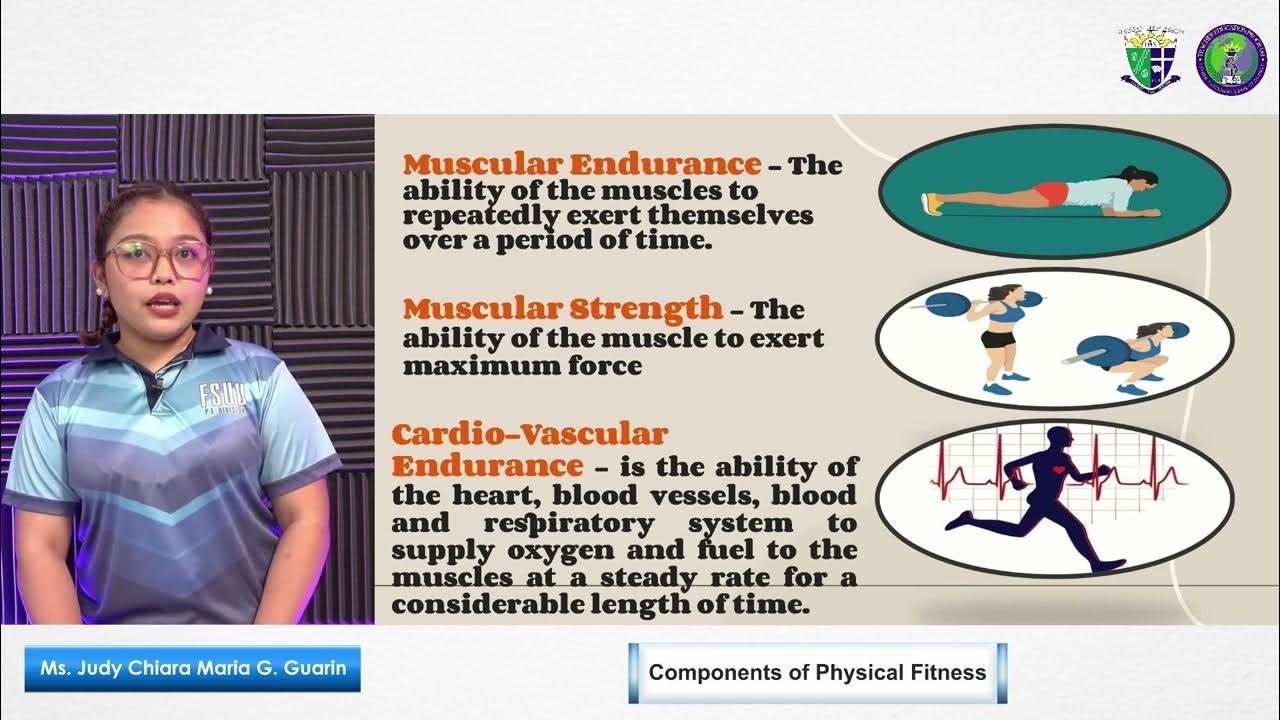PHILIPPINE PHYSICAL FITNESS TEST ( PPFT )
Summary
TLDRThe script introduces the Physical Fitness Test (PFT), a comprehensive evaluation of students' physical fitness levels in health-related and skill-related categories. It covers various tests including BMI, flexibility, cardiovascular endurance, muscular strength, and agility, along with guidelines for conducting these tests. The PFT aims to assess a student's ability to perform daily activities and excel in sports, emphasizing the importance of physical education in the new K-12 curriculum.
Takeaways
- 🏋️ The PFT (Physical Fitness Test) was introduced by Dr. William Mickey to establish testing protocols for the SPS program and the new K-12 program in the Philippines.
- 📝 The PFT assesses two categories of physical fitness: health-related and skill-related components.
- 💡 Health-related components focus on attributes like cardiovascular endurance, muscular strength and endurance, flexibility, and body mass index (BMI).
- 🌟 Skill-related components measure physical abilities that indicate potential for good performance in sports, such as speed, agility, reaction time, balance, and coordination.
- 👕 Before conducting the PFT, students should wear appropriate clothing and sports gear, and perform warm-up and stretching exercises.
- 📐 The BMI test is a health-related component that measures body composition, using the formula weight (kg) / height (meters)^2.
- 🔢 BMI classification ranges from underweight (below 18.5), normal (18.5 to 24.9), overweight (25.0 to 29.9), to obese (30.0 and above).
- 🧘 Flexibility tests, such as the zipper test and the sit-and-reach test, measure the range of motion of the joints and muscles.
- 🏃♂️ Cardiovascular endurance is tested through exercises like the 3-minute step test, which measures the ability of muscles to work without fatigue.
- 💪 Strength tests, including push-ups and the basic plank, evaluate the strength and stability of the upper extremities and core muscles.
- 🕊️ Skill-related tests like the 40-meter sprint, standing long jump, agility test, stick drop test, and juggling assess various athletic abilities and coordination.
Q & A
What does PPXP stand for and what is its purpose?
-PPXP stands for Physical Fitness Test. It was introduced to establish testing protocols that are more current and appropriate for the Special Program in Sports (SPS) and the new K-12 program. It is designed to determine a student's level of physical fitness, including health-related and skill-related components.
Who introduced the PPXP and for what reason?
-The PPXP was introduced by Dr. William 'Mickey' Velasco, a former chair of the Philippine Sports Commission and director of the Bureau of Physical Education and Sports. It was conducted to establish testing protocols that are more relevant to the current needs of the SPS program and the new K-12 curriculum.
What are the two categories of physical fitness tested in the PPXP?
-The two categories of physical fitness tested in the PPXP are health-related and skill-related components.
What does the health-related component of the PPXP refer to?
-The health-related components refer to physical attributes that enable a person to cope with the requirements of daily living, such as cardiovascular endurance, muscular strength and endurance, flexibility, and body mass index.
What are the skill-related components in the PPXP?
-Skill-related components are physical abilities that indicate potential for good performance in certain skills, typically in sports. These include running speed, agility, reaction time, balance, and coordination.
What are some important reminders to follow before conducting the PPXP?
-Before conducting the PPXP, students should be guided by a teacher to familiarize themselves with the testing procedures, avoid taking tests that require cardiovascular endurance or involve the same muscle groups in succession, wear appropriate clothing and footwear, and conduct warm-up and stretching exercises.
What is the formula for calculating Body Mass Index (BMI)?
-The formula for calculating BMI is weight in kilograms divided by the square of height in meters (BMI = weight(kg) / height(m)^2).
What are the BMI classification ranges?
-The BMI classification ranges are: underweight (below 18.5), normal (18.5 to 24.9), overweight (25.0 to 29.9), and obese (30.0 and above).
What is the purpose of the flexibility tests in the PPXP?
-The purpose of the flexibility tests, such as the shoulder stretch test and the sit-and-reach test, is to measure the range of motion of the joints and muscles.
What is the purpose of the cardiovascular endurance test in the PPXP?
-The purpose of the cardiovascular endurance test, like the 3-minute step test, is to measure the ability of the heart, lungs, and blood vessels to deliver oxygen to working muscles and tissues, and the ability of those muscles and tissues to utilize the oxygen.
What are the different skill-related fitness tests included in the PPXP?
-The skill-related fitness tests in the PPXP include speed (40-meter sprint), power (standing long jump), agility, reaction time (stick drop test), balance (store balance test), and coordination (juggling).
Outlines

此内容仅限付费用户访问。 请升级后访问。
立即升级Mindmap

此内容仅限付费用户访问。 请升级后访问。
立即升级Keywords

此内容仅限付费用户访问。 请升级后访问。
立即升级Highlights

此内容仅限付费用户访问。 请升级后访问。
立即升级Transcripts

此内容仅限付费用户访问。 请升级后访问。
立即升级5.0 / 5 (0 votes)






